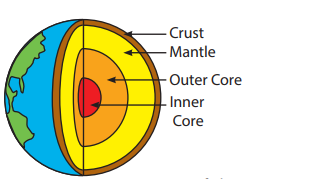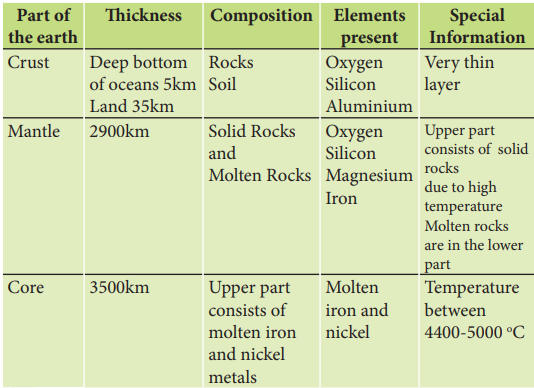The nature of the earth
Structure of Earth
Crust
The surface of the earth where life exists is the crust. When compared with the size of the earth, it is a thin layer. Mountains, plains and oceans are found on the crust. Its thickness varies from place to place. At the bottom of the oceans its thickness is about 5 km. On land its thickness is about 35 km. The earth’s crust consists of rocks and soil. It is made up of basic elements like oxygen, silicon and aluminum. The earth’s crust provides most of the elements necessary for our sustenance. e.g.:- Construction materials Metals Fossil fuel Soil for agriculture
Mantle
Underneath the earth’s crust lies the mantle. Its thickness is about 2900 km. It consists of rocks. These rocks contain oxygen, silicon, magnesium and iron. The upper part consists of solid rocks. The lower part is made up of molten rocks due
to extreme hot environment.
Core
The inner layers of the earth 1100 km 2400 km 2900 km The innermost part of the earth is the core. Its thickness is about 3500 km. The upper part of it is made up of molten iron and nickel metals. The temperature of this area is between 4400
o C - 5000 o C. Due to high pressure, the lower part of the core remains hard. Its temperature is more than 5000 o C which is as high as the temperature on the surface of the sun.
